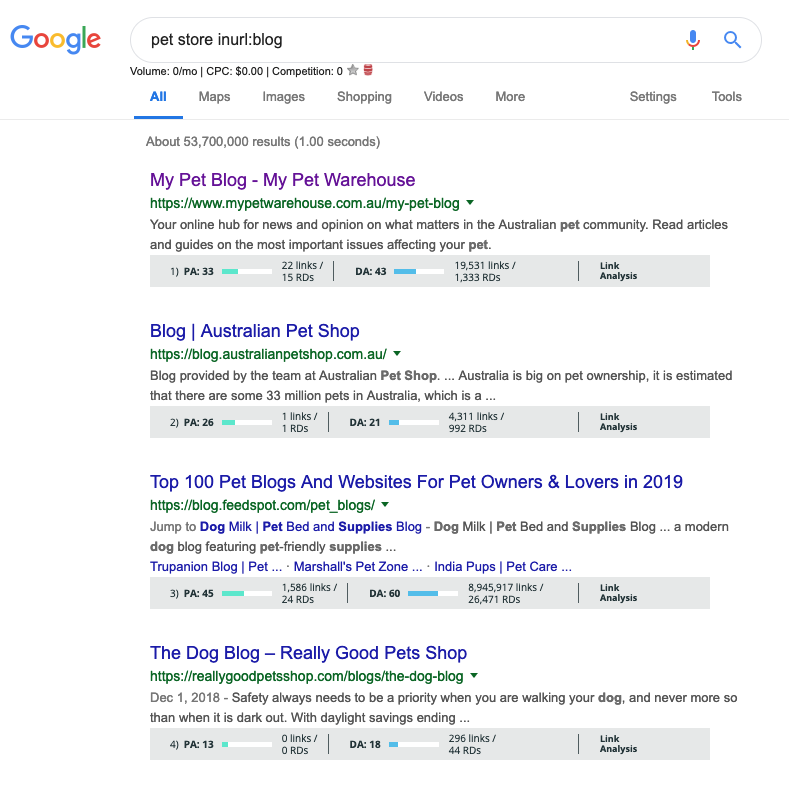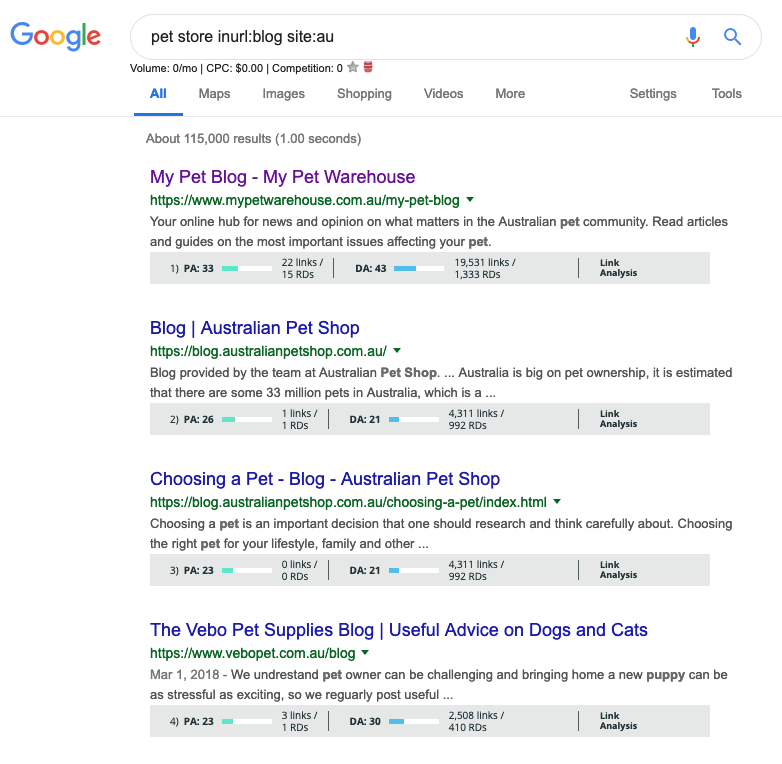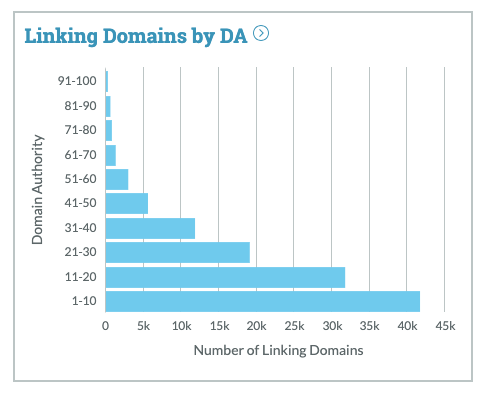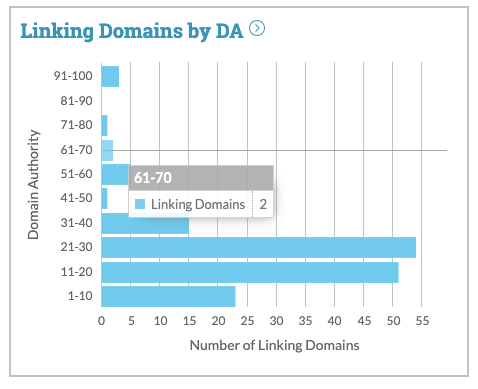Let’s face it, the majority of us struggle at the thought of the cold call approach. So it’s quite understandable that the topic of outreach is not something that most of us get excited about.
The cold call typically involves an unsolicited telephone call or visit to someone with the sole purpose to sell a product or service.
Outreach is very different from the cold call in its approach. Outreach is more about what you can do for someone rather than focusing on just the sale of a product or service.
To help those who struggle with the outreach process, we’ve put together a guide on how to locate and outreach prospects in your industry.
For your outreach to be successful requires identifying the right individual, what compels them and the clear value of your offer.
To make it a little easier, we’ve provided some background information on the importance of backlinks, content marketing and collaboration so that your outreach will be more effective.
What are backlinks and why they are so important?
Backlinks play an essential role in search visibility.
Earning links (also known as ‘link building’) is a process of acquiring backlinks, considered one of the top-ranking factors in Google next to content marketing.
The benefits of attracting links are simple. Links build website PageRank.
PageRank is calculated by Google’s sophisticated scoring algorithm to determine websites underlying authoritative strength and search visibility. When combined with a targeted content marketing strategy backlinks increase website traffic and grow brand awareness.
Google’s definition of natural linking is defined when another website (business) links to your content purely because the insights it provides are deemed so worthwhile that it attracts links naturally.
Google believes website owners are compelled to link to high-quality content based solely on the benefit it provides for their audience. In reality, however, it seems only websites that have already gained significant traction in the search results benefit from this natural linking phenomena.
How content plays an essential role in building backlinks.
Important as quality content may be, quality content alone will not earn you poll-position in the Google results for competitive keywords and/or phrases.
There are other critical factors in play.
Natural links aside, the real takeaway is that without quality content and a collaborative network to leverage your content marketing strategy, there is no mechanism in which to anchor a contextual link from one resource to another and keep it within Google guidelines.
Link building has its challenges, it requires a significant investment in time and a systematic, targeted approach to content creation that answers the needs of your audience.
To appease Google’s search algorithm, creating compelling content is essential. The collaborative alliances you make and the backlinks you build directly impacts your search visibility.
The sobering reality; being seen as an expert in your field through the compelling content you create is essential to building your business authority. Actively collaborate and share your knowledge with others, remember the giving mindset, being likeable is the first step in earning trust and building relationships.
Building a natural backlink profile to your website is the key.
Google makes it very clear about the penalties for artificially inflating inbound link numbers through link schemes or purchasing paid links. The severity in which Google penalises offending website owners has resulted in many businesses being fearful of pursuing any kind of backlink strategy.
Fortunately, there is a way to amplify the eyes on your content without falling foul of Google’s guidelines.
How collaboration can help build backlinks.
Understandably it is challenging for some websites to acquire backlinks ‘naturally’ due to poor search visibility. We are going to show you how to rectify that by building links through collaboration.
We will show you how to quickly locate collaborative opportunities within your industry so you can start boosting backlinks to your website today.
As mentioned in our previous collaboration article, we discussed adopting the right mindset and offered several outreach strategies you can use on outreach. These strategies help build long-term alliances and gain the leverage you need to bolster your visibility in the search results.
However, before you can start applying those strategies, you will need to locate potential prospects within your industry and build your collaborative network.
How to locate outreach prospects and build your collaboration alliance.
I’m going to be bold and say, the approach I’m about to reveal is a little less conventional than you might expect.
To make our message clearer for you, we have stripped away the mumbo jumbo churned out by so many on the subject of outreach.
So as not to disparage other methods; we simply reveal an approach we’ve found easier in identifying the right collaboration partners quickly.
The strategy focuses on building a broader collaborative network in your industry. By broadening your network and not actively participating in PBN’s you remove the possibility of your content marketing strategy becoming unstuck.
Our strategy from the outset was to devise a solution both affordable and easily implemented by small business owners while also appealing to companies of all sizes who are results-driven.
Affordability was a significant consideration in our approach as the majority of online tools are expensive. We wanted to provide a solution for the budget-conscious, this meant restricting our tool to just one provider, that tool was Moz.
We selected Moz, due to its domain and page authority scoring system which has earned global acceptance. Moz recently released a new DA scoring algorithm designed to weed out those who have artificially inflated their DA score by using unnatural linking practices.
The Moz update enables better critical analysis in pinpointing positive link patterns common across the majority of high DA websites and unnatural link patterns found on some guest posting websites or PBNs.
Lastly, but definitely not least, Moz provides a range of useful tools which are recognised by the majority of SEO and marketing professionals.
If you have a few more pennies to invest my favourite keyword and content research tool is Ahrefs.
Reaching out to business prospects in your industry.
As time spent can never be regained, finding time-saving solutions is something that has always appealed to me. There is an abundance of outreach tools and strategies readily available that have grown in popularity over the years – we suggest you investigate them all.
Finding the right collaborative partners within your industry requires an understanding of what it is that serves the interests of your prospect and the form of leverage you are seeking.
If however, you struggle to find the right industry connections, what we are about to discuss will hopefully provide you with some strategic insights missing from your current approach.
We have assumed that you’ve done the necessary keyword research and have a good understanding of your industries primary keywords, if not start digging for opportunities by using Moz Keyword Explorer or as mentioned you could try Keyword Revealer.
Searching for prospects in your industry.
Rather than use automated outreach tools to search for potential prospects, we use just one Google search operator with up to three variations, a technique easy to master which produces some incredible results.
So let’s get started.
We commence by looking for prospects in your industry who already have a blog. Our approach is intended to save you time by putting you in direct contact with businesses in your industry.
The simple identifier:
The presence of a blog is an indicator that the business has at the very least has an understanding of the importance that content plays in educating audiences and answering their needs or problems.
There are other indicators you’ll need to look out for such as the regularity of their blog posts and the quality of the content produced, plus several other on-page and off-page indicators.
We decided to use a Pet Store as our working example.
Below we have listed some related niches that could be used when searching for outreach prospects, they are;
Accessories
Food
Care
Diet
Grooming
Exercise
Veterinary
Pet Training
Breeders
Kennels/Resorts
Pet Vacation Care
Dog Walkers/Sitters
We’ll show you how you can use any one of these primary keyword phrases along with a Google search operator to end up with a long list of viable prospects. We use only primary keywords or phrases with Google operators because long-tail keywords do not produce satisfactory results.
Lastly, do not discount your competitors as potential collaborators. At the very least, consider the possibility of collaboration with similar businesses which are outside your locality, region or country.
Before you start, some essential tools.
- Moz subscription
- Mozbar chrome extension.
Make sure you log in to Moz.
Google Operator Strings
The first operator string we’d like to show you is inurl:
pet store inurl:blog
Now if you are logged into Moz and using Moz bar on your browser you will see results like this;

Now if you wish to restrict results to your country only, then add a country identifier to the search string, like this;
pet store inurl:blog site:au

Moreover, if you want to exclude your state or region, do so with a minus symbol as shown;
pet store inurl:blog site:au -vic
There are many other search operators you can use; however, you will have more than ample prospects to follow up by using the abovementioned.
Looking at your on-page results, start sorting through potential prospects. Remember we are looking for resources that offer value to our audience.
5 pre-outreach checks you should make.
Before you start your outreach there are a few essential checks you need to make as you delve into each of the websites listed in your Google search, they are;
1. Check website DA score.
Many SEO’s will tell you to look at only the high DA websites only as they pass on more link strength to your website, however, this strategy is somewhat flawed.
By seeking to collaborate with solely high-value DA websites may result in unnatural link patterns on your domain profile. Significant spikes in DA score ranges may result in a manual penalty.
Often, some great content can remain unseen on low DA value websites. Do not discount the importance of reaching out to as many businesses as you can regardless of DA score. Use DA as a guide, but do not let it dictate your collaborative strategy.
Keep in mind, a new website with a low DA score today may well be the high-authority website you might be seeking in the future. Consider the quality of content and value to your customers.
2. Checking for inbound link manipulation and why it’s crucial.
The next step is to check the DA authority of websites linking to the outreach domain, in particular, the linking pattern of inbound links across the entire DA spectrum.
Natural Inbound Link Patterns
You should see a natural curve starting at DA 0-10 and dropping nicely for each DA range to 90-100. Below is a snapshot of the Moz.com links by domain at the time of writing this article which serves as an excellent example of natural linking habits.

Natural linking patterns tend to attract higher volumes of low DA domains,
with volume gently tapering off through each DA range.
Unnatural Inbound Link Patterns
Unnatural spikes across one or more DA ranges that don’t follow the curve could indicate irregular linking habits from the website owner that might be better avoided.


Unnatural linking patterns tend to have staggered volumes across all DA ranges.
It should be noted the above linking patterns are only an indicator, and the Moz algorithm is in no way directly tied to the Google algorithm. You can read more about the Moz 2.0 update on their website and detecting link manipulation.
3. Checking the website spam score.
The spam score is intended to potentially flagged websites that might be participating in link schemes within bad neighbourhoods. Ideally the lower the score, the better, with zero being the best, and anything above 20% potentially flagging a problem.
Note: Score results can be skewed if the amount of linking domains is low due to the algorithm not having sufficient inbound links to calculate an objective spam score, especially on new websites.
4. How related is the content to your audience?
An essential step in the evaluation process is to ensure there is relevance in the various blog posts on your outreaches website. Ask yourself if the content will add value to your target audience.
Consider conversational flow, article length and how well is the topic covered (is the information flaky?). Carefully consider the value of each collaborative approach as linking to unrelated content will only devalue your audience’s trust and your brand.
5. Follow & Nofollow links and when to use them.
Dofollow links are the most valuable resource for improving website DA. However, this does not mean you should ignore or not pursue Nofollow link opportunities. There are in fact good reasons why Nofollow links should be sought.
Nofollow links are the most prevalent, and their inclusion promotes a more ‘natural’ inbound linking pattern on your domain profile. Secondly, no-follow links from high-traffic websites provide an opportunity to target niche markets through purposeful sponsored ads without falling foul of Google guidelines.
Is Guest Posting against Google Guidelines?
Before we go any further, there continues to be a lot of noise around the subject of guest posting so it’s a topic worth discussing.
Google warns against guest posting with the intent to build inbound links; however, blogging websites that accept guest posts continue to be a valuable source of in strengthening your domains search visibility.
When considering whether or not to guest post, webmasters should thoroughly review whether or not the guest post will add value to the audience you serve and if in doubt consider whether the link should be a Nofollow link.
If you consider guests posts as part of your content marketing strategy, you can broaden your use of Google search operators by including terms like “write for us” or “guest posts” instead of the search operator “blog”.
There are many more search terms you can use to expand your search for guesting posting websites. A quick search on Google will reveal which phrases to target. The majority of these will be paid guest posts.
Pursuing a paid guest posting strategy does not really fall within the collaborative approach and is likely to create a very ‘unnatural’ inbound linking pattern.
Broadening your collaborative network and focusing on the customer experience is the best way to improve your website’s visibility in the search results without falling foul of Google guidelines.
Fine-tuning your outreach.
I would like you to imagine a time when you’ve been invited to a party, and upon entering the venue, you quickly realised you barely know anyone there.
You immediately feel uncomfortable.
At this point, there are a couple of scenarios that might typically play out on such an occasion. If you didn’t decide to make a quick exit, you might well have ended up at the bar or found a comfortable corner.
You know to enjoy the party you need to circulate and find someone that shares your interests, but striking up conversations with strangers is never easy.
There are no labels for you to identify common traits, so after scanning the room for prospects, you select an individual and spark up a conversation. All too soon you realise you have nothing in common and the conversation stagnates. All of a sudden you feel in a very awkward place.
Many tackle collaboration in a similar way, rushing headlong with a full arsenal of online tools before refining their approach.
As you progress through the steps outlined in this article, you will come to a clear understanding of the collaborative approach.
Be clear about the skills you possess, what you need and what it is you offer in return. Remember, your seeking to align with individuals with the right mindset, who understand your collaborative approach.
This refreshingly transparent approach enables like-minded individuals to identify potential opportunities which compel them to action.
Now we are going to try and put what we have learned into action.
The outreach email.
As mentioned in our previous article on collaborative strategies, there are many ways you can collaborate with your prospect. You will increase your possibility of success by thoroughly researching these strategies before outreach.
Before outreach, review your prospects website. Locate possible opportunities which exist within the website’s content and/or social media channels.
Below is an example of an outreach you might send via email. It’s a great way to break the ice and see if your prospect has any interest in collaborative strategies.
“Subject: We Would Like to Help You Grow
Hey Name,
Name from Company name here. I wanted to say how much I enjoyed reading your article on Website name about Subject!
There are some great opportunities we could pursue to get more visibility on each other’s content.
Interested?
Our offer does not cost you anything other than a few minutes of your time.
We’d love to hear from you and discuss these opportunities in further detail.
All the very best,
Name
Company Signature
Social Media Profiles”
You can customise the above message and provide a little more detail, however, keep it short and straightforward.
Once you have received a response from your prospect, it’s time to detail what you have in mind, be very clear about what you are proposing and when it will be completed. Keep in mind the ease in which you both collaborate together will determine if future collaboration opportunities will result.
If you do not receive a response from your prospect, don’t immediately disregard them, try reaching out again in a week or two, if they do not respond after a second attempt it is likely they are simply are not interested.
Maintaining an outreach list.
As you build your collaborative alliance, you will need to maintain an outreach list. Your list will consist of your outreach contact details, website URL, industry and their audience niche as well as any outreach strategies you have negotiated over time, for instance, any origin and target URLs, special notes etc.
Maintaining an outreach list will make future outreach strategies more efficient and effective by broadening your network and ability to negotiate link and/or guest posting opportunities with other prospects.
Conclusion.
Building authoritative backlinks is not hard; it does, however, require a significant investment in time to locate and nurture collaborative alliances.
I hope this guide has provided you with some actionable insights for identifying prospects within your industry and building a powerful collaborative alliance and an active backlink profile.
If you would like to share any insights on how you approach your collaborative outreach, we love to hear them and welcome any feedback or questions you may have.
Addendum.
Outreach and Collaboration tools that may interest you.
To provide our audience with a grounded approach, we have listed below some very credible tools which are highly regarded amongst SEO and marketing professionals. Those tools are;
Keep in mind that while some crossover in features does exist, the above tools are very unique in their approach and purpose. We advise taking advantage of free trials where available to ensure the solution is the right fit for you.